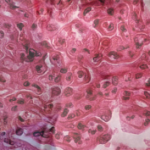Immunosuppressive Therapy in Lupus
Today most experts agree that the treatment of severe lupus involves a period of intensive immunosuppressive therapy aimed at halting immunological injury (induction therapy), followed by a period of less aggressive maintenance therapy to maintain the response. The latter period is essential to prevent flares and organ damage accrual. Although this strategy seems logical, it has not been formally tested against a “wait and treat the flare” approach.
Studies dating back to as far as the 1960s clearly demonstrated that high-dose glucocorticoids were not effective in halting end-stage renal disease (ESRD) in proliferative lupus nephritis (LN), with most patients requiring hemodialysis after five to 10 years. This observation, coupled with an increased awareness of steroid toxicity, provided the impetus in subsequent years to explore alternative immunosuppressive agents with an emphasis on AZA and CY. In these trials, most of the data originated from two centers in the United States: Mayo Clinic and the National Institutes of Health (NIH).
